Hello and happy Monday! I’m back with a new DIY furniture project to share with you all! My dad needed a place to set his printer, so I called on my lovely friend, Ana White to help me design plans for a printer table that would complement his existing desk.
This was my dad’s current printer table situation:
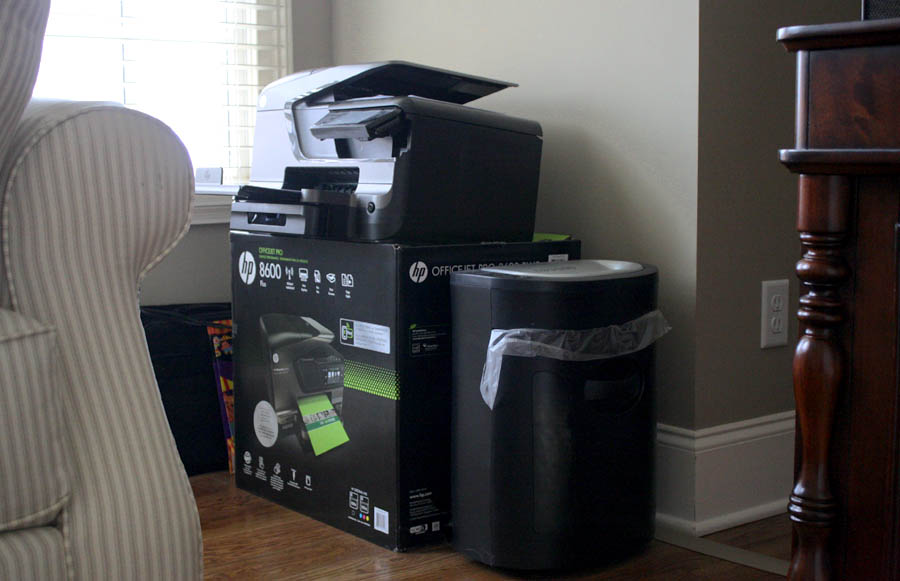
UNACCEPTABLE.
Especially for a guy
who has a daughter
who builds furniture.
Amiright?
Our conversation went a little like this:
Dad: Hey, look at my new printer.
Me: *blink blink* Dad, you always put everyone else’s needs before your own, you never ask for anything, and I love you for that, but um, have you met me? I kind of have this thing, where I build stuff. Can I help you with this whole situation?
Dad: Okay, that’s cool.
God love him.
So here’s what we came up with:
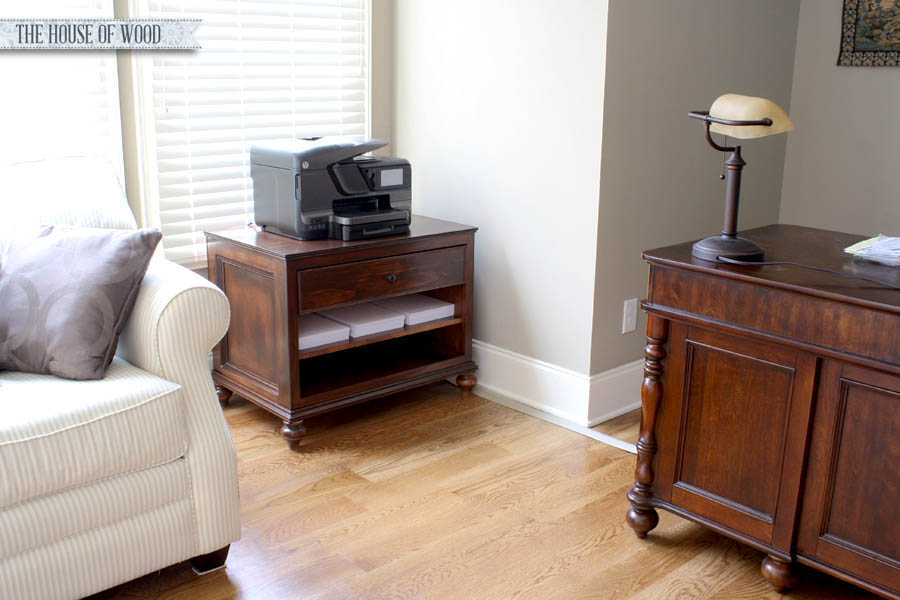
I’d say this is a more intermediate build only because of the extra trim work details, but you can easily turn this into a beginner project if you leave out all the decorative trim.
You can download the plans for this printer table here.
*Update: The finishing tutorial for this printer table can be found here.
*This post contains affiliate links. To read my full disclosure policy, click here.
Okay, so let’s get started, shall we?
1. Build the Carcass
First, drill 3/4″ pocket holes on the underside of the bottom board and attach the two sides with 1-1/4″ pocket hole screws. As always, I used my favorite plywood, Purebond Hardwood Plywood. It’s available exclusively at The Home Depot. Not only is it the prettiest plywood I’ve ever seen, but it’s formaldehyde-free and made here in North America. Read about why Purebond Plywood is the healthier alternative here and why I’ve taken the Purebond Pledge.
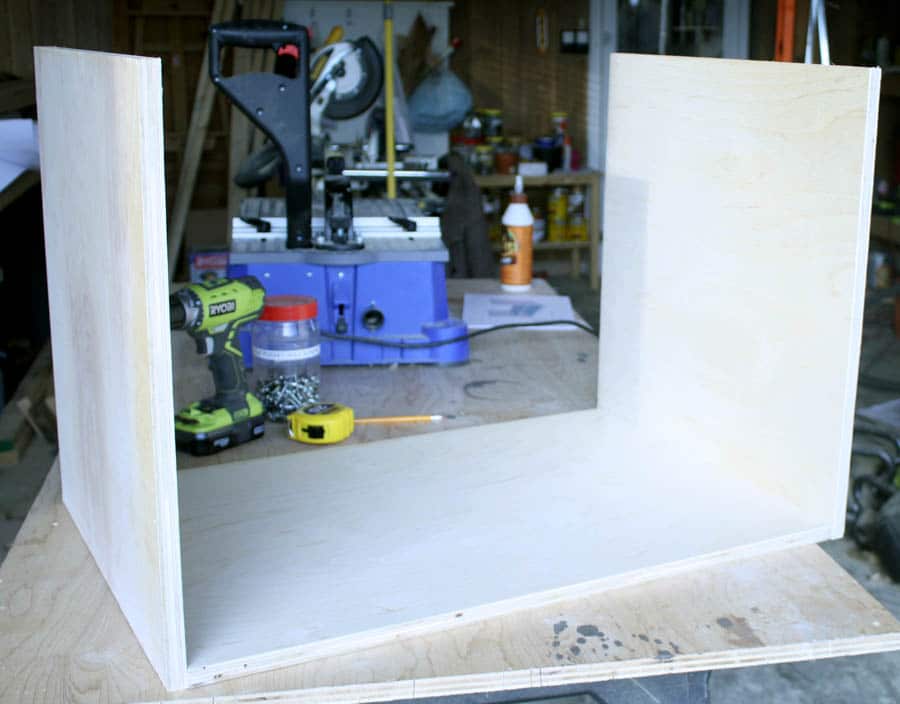
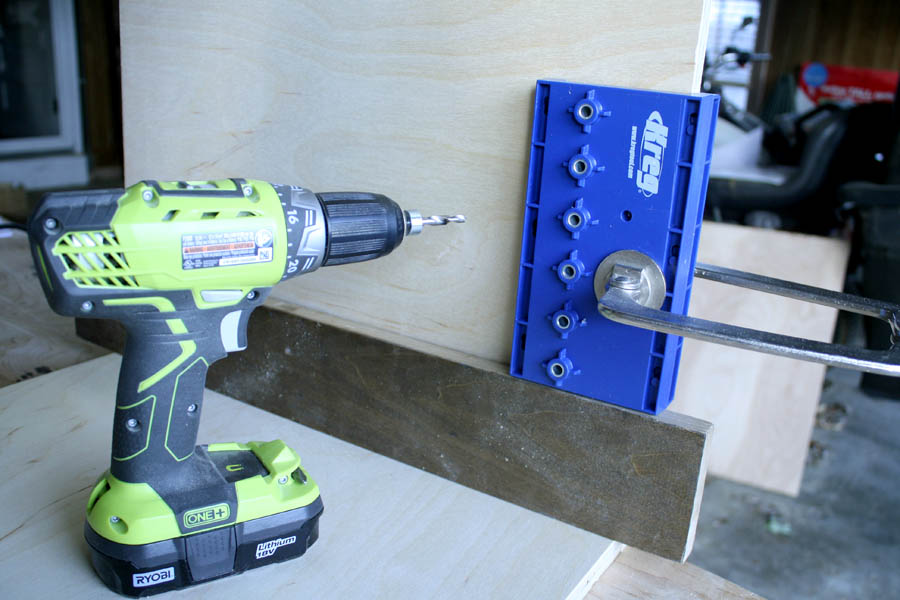
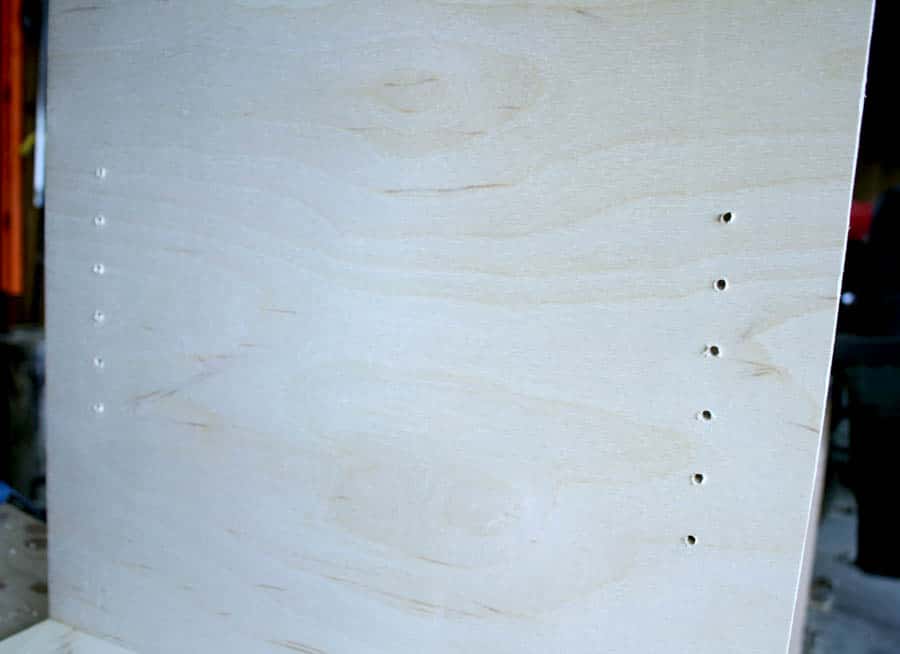
Now here’s where it can get a little tricky. Because I wanted the inside edges of the 1×3 trim to graduate to the thinner moulding, I used a 45º angle bit on my table router and routed the edges of the 1×3 boards. But because it would be a frame, I couldn’t route the entire edge of the vertical trim pieces. After a few practice runs on scrap wood, I finally figured out the correct length (16″) to route the vertical pieces so that everything lined up when assembled. It’ll make sense in a minute (I hope).
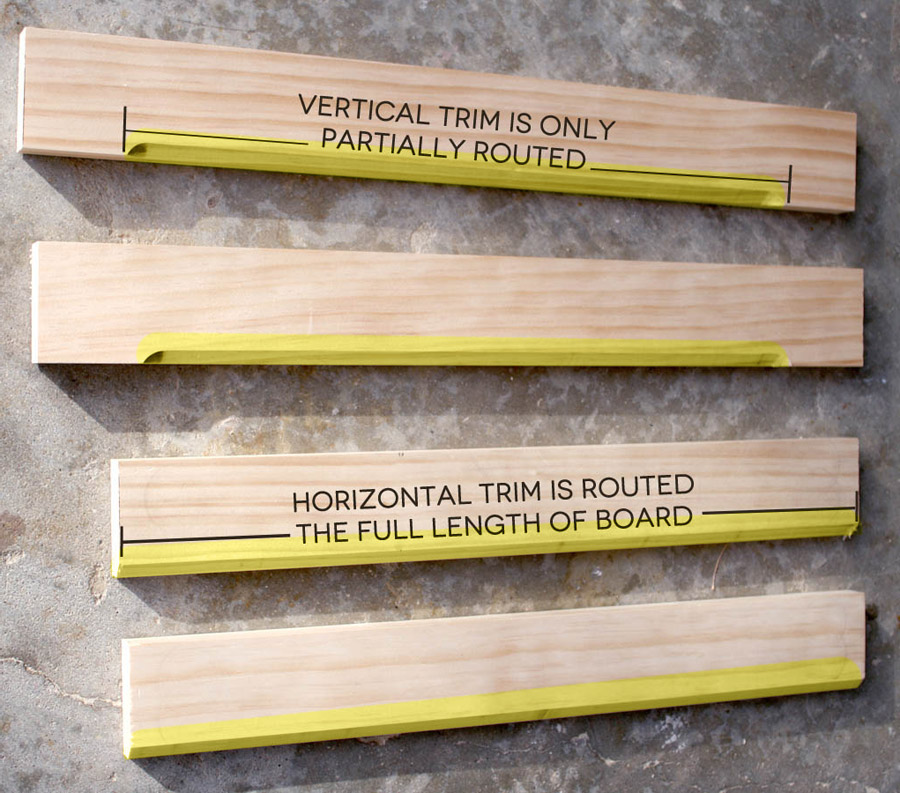
I wonder if it would have worked if I built the frame first and then hand-routed the inside edges… ? Knowing me, I probably made things more difficult than they needed to be. Let me know if you come up with a better, more efficient way of accomplishing this. At any rate, after a bit of brain power and a little trial and error, I got the routed edges to line up perfectly! Here is the front view of the trim:
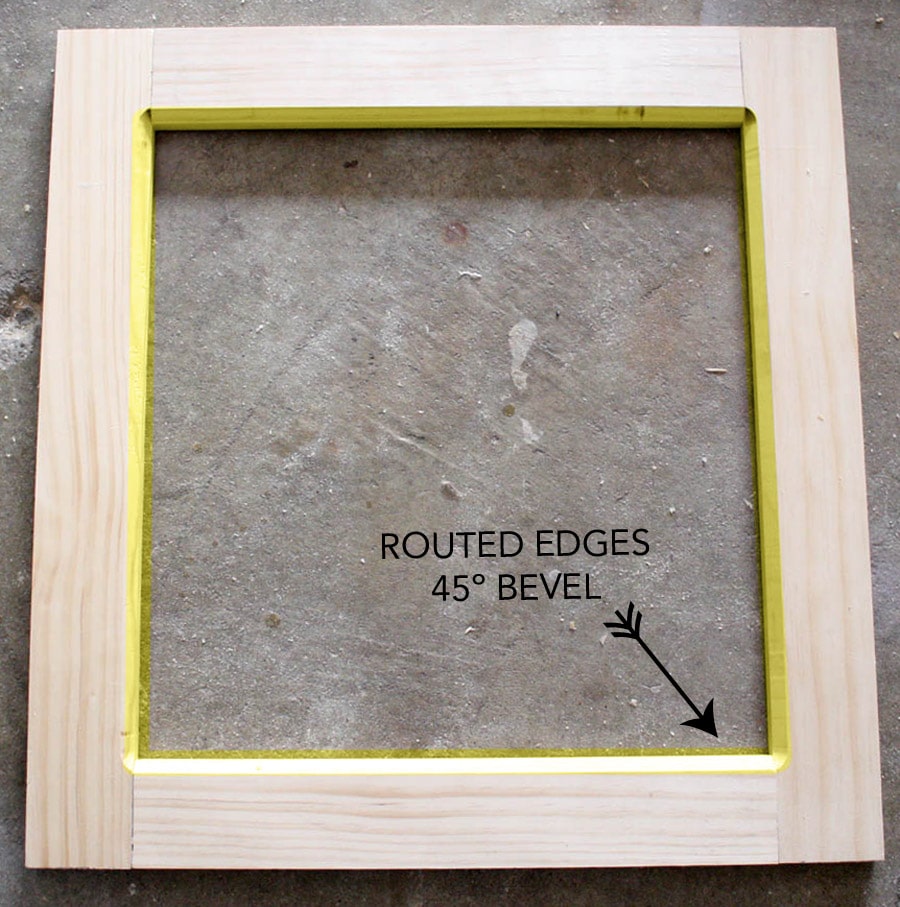

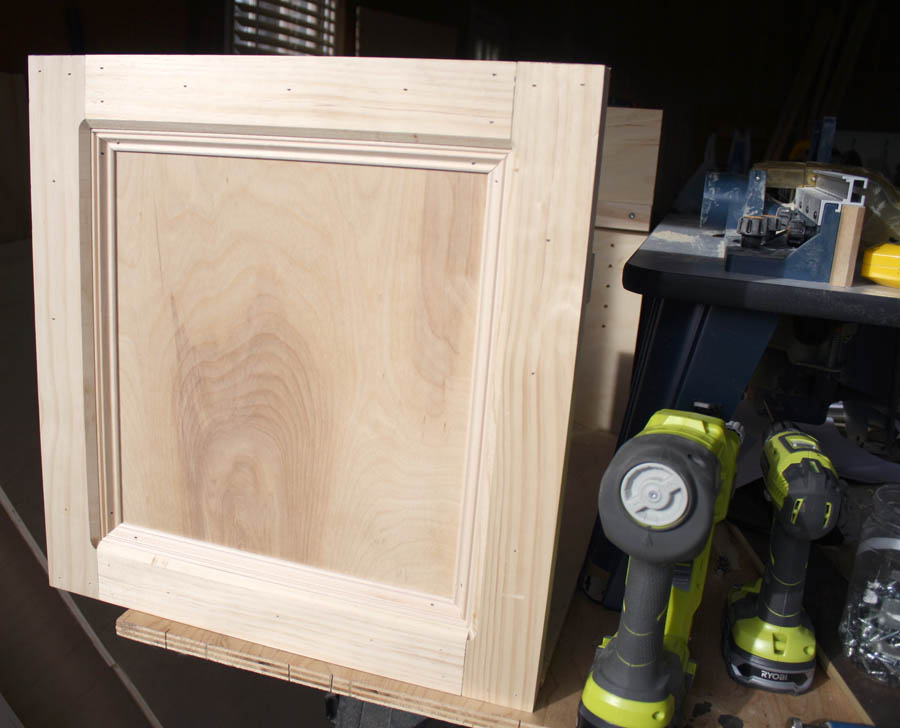
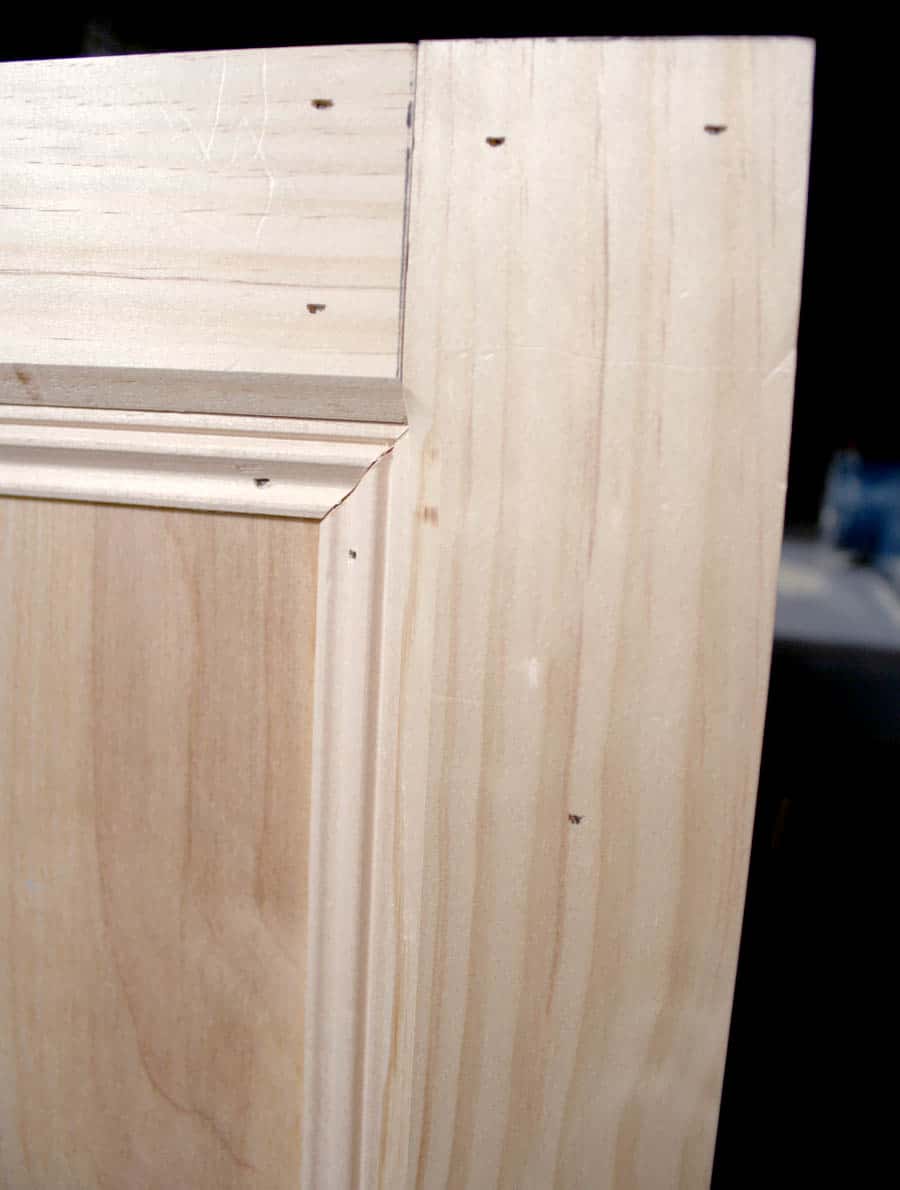
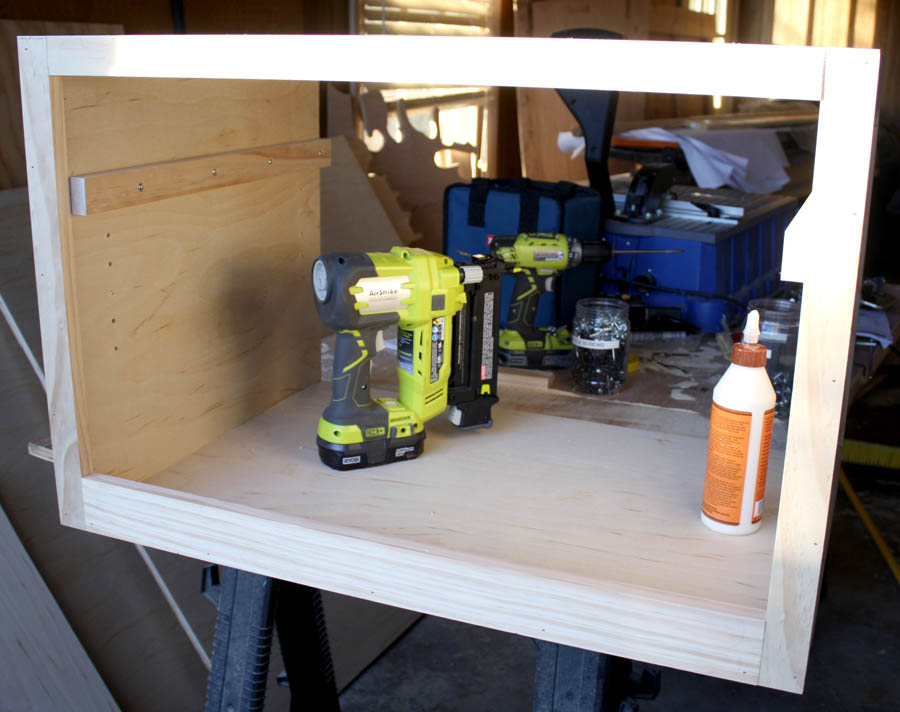
These are the drawer slides I used. Following the installation instructions that came with the slides, I aligned the cabinet member slide to the front edge of the drawer cleat and attached it with the screws included in the package. Then I attached the drawer member slide to the drawer. Be sure to measure the opening of your drawer space and build your drawers to fit, rather than just going on plan measurements, for precision. You know, if you’re into that sort of thing.
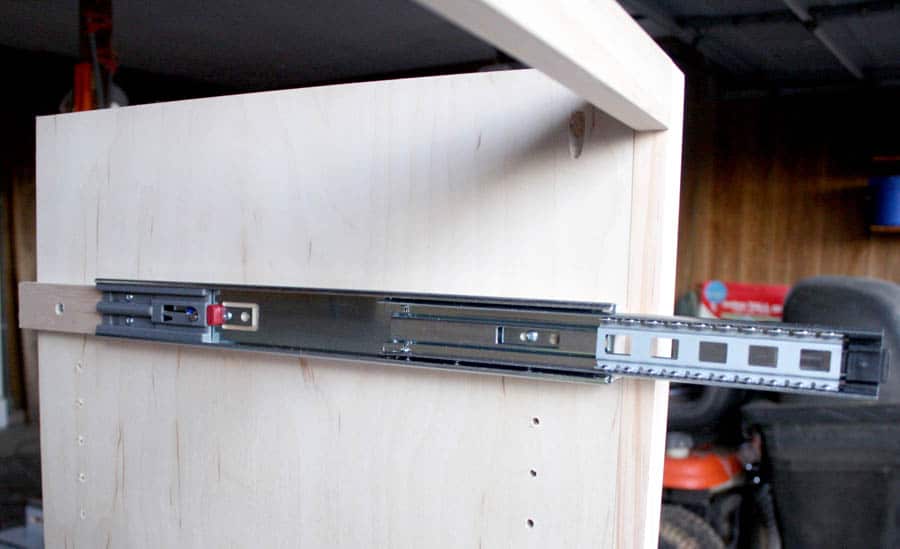
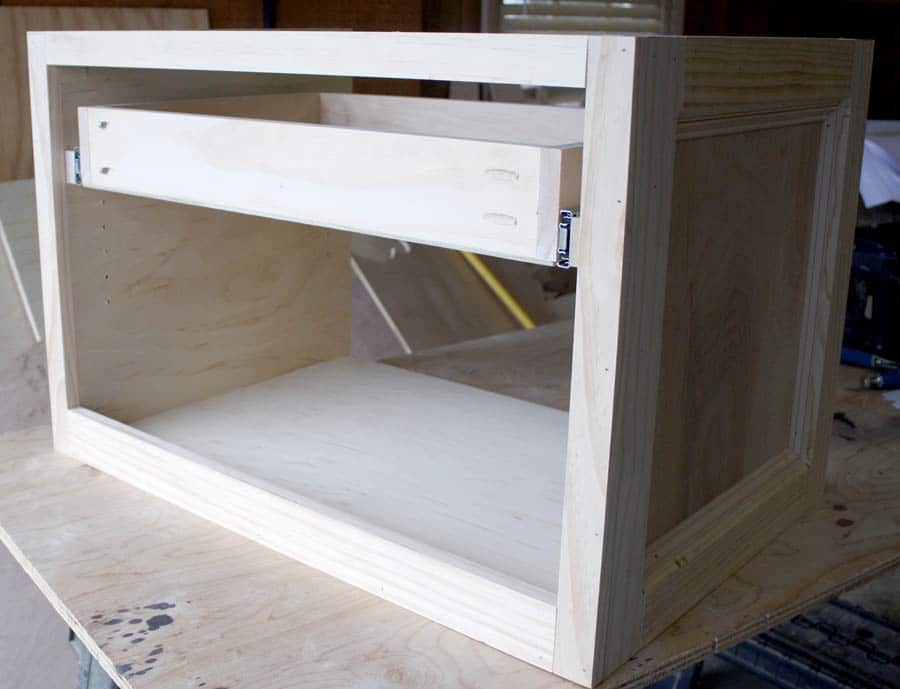

Next, I attached the drawer face with some brad nails and glue, and installed the knob. The screw that came with the knob wasn’t quite long enough to reach to the other side, so I countersunk the hole on the inside of the drawer so that the screw would reach the knob.
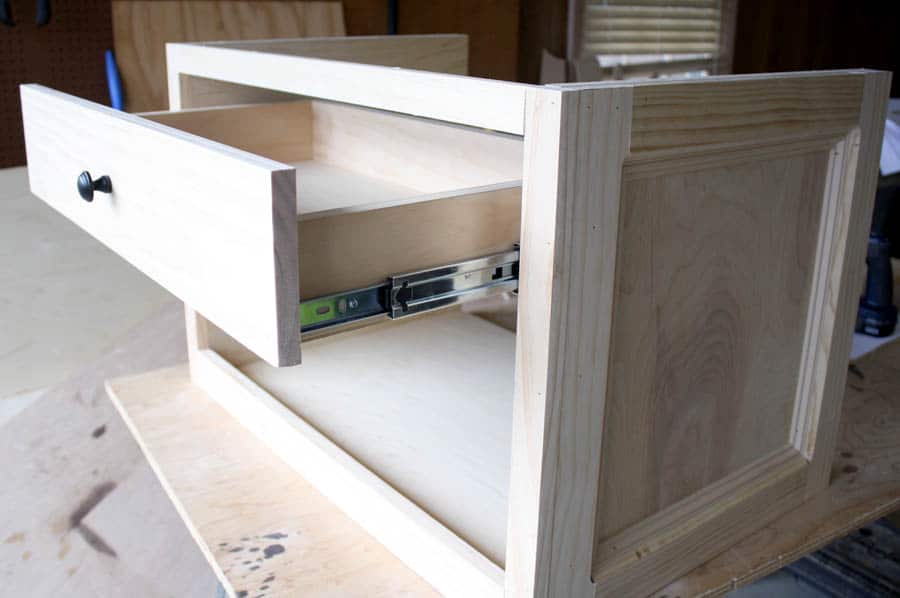
Great. Now I want pie. And how funny would it be if I sliced my pie with my circular saw? Not funny at all, actually. Messy. Very messy. And dangerous. Honestly, what kind of crazy person do you think I am?!
Disclaimer: circular saws are not meant to cut food products. Please do so at your own risk. Then take photos and send them to me. I need a good laugh every now and then.
Amendment: Please disregard that last paragraph. I really can’t afford to be sued over such ridiculousness.
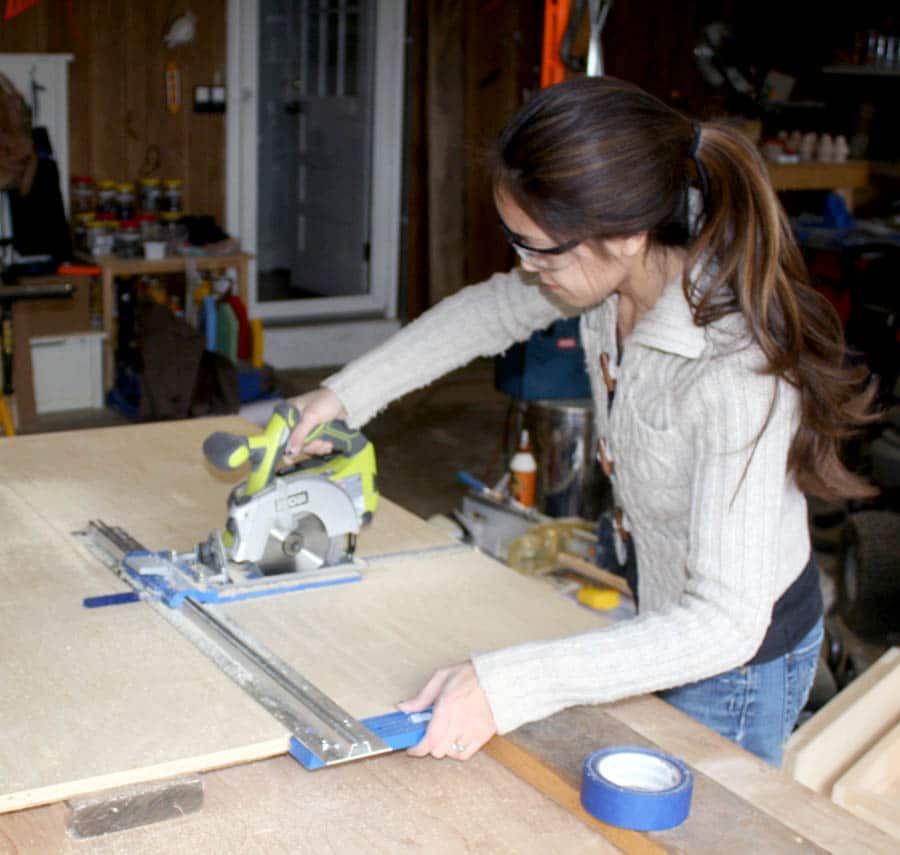
Here are a couple tips to help minimize tear-out on your plywood edges: first, you’ll want to use a blade that is specifically made for cutting plywood. The more teeth on the blade, the finer the cut. Also, tape along the line where you’re going to make your cut and it can help hold the fibers together long enough for the blade to pass through cleanly.
After cutting the top out of the plywood, I attached it with glue and brad nails. Pocket hole joinery underneath would also work well here. Then I added some decorative moulding around the top and bottom edges, as well as around the drawer face, just to church it up a bit.
4. Attach the Bun Feet
Using these thingamajiggys called “hanger bolts” and “tee nuts”, I was able to attach the Osborne Wood bun feet to the bottom of the printer table. First, I drilled a pilot hole into the top of each foot. A drill press would be the ideal tool to use here, to assure that your pilot hole is perfectly perpendicular.
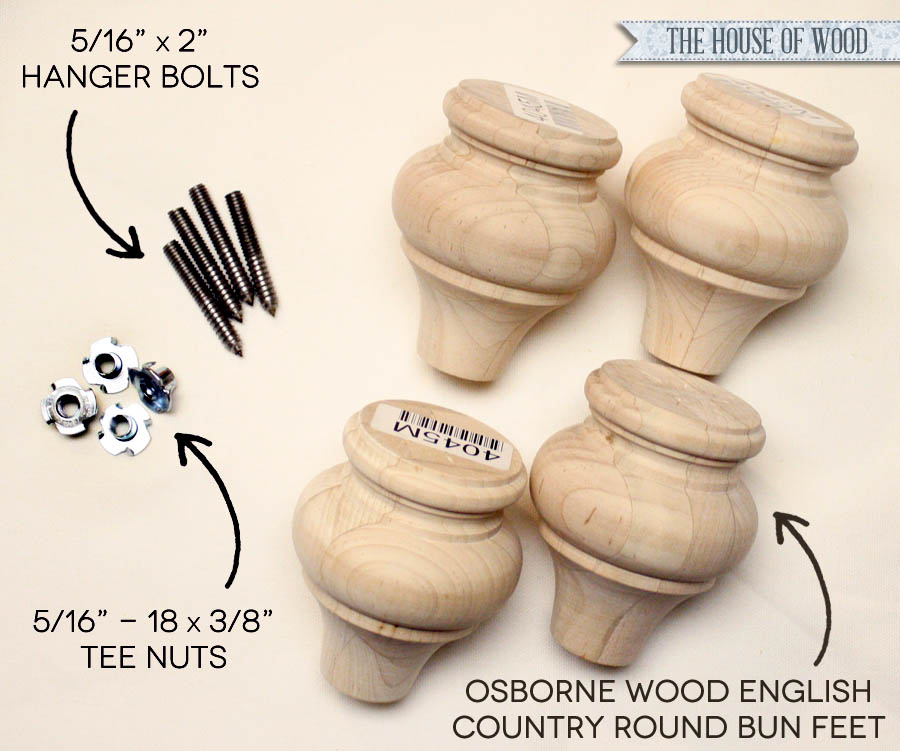
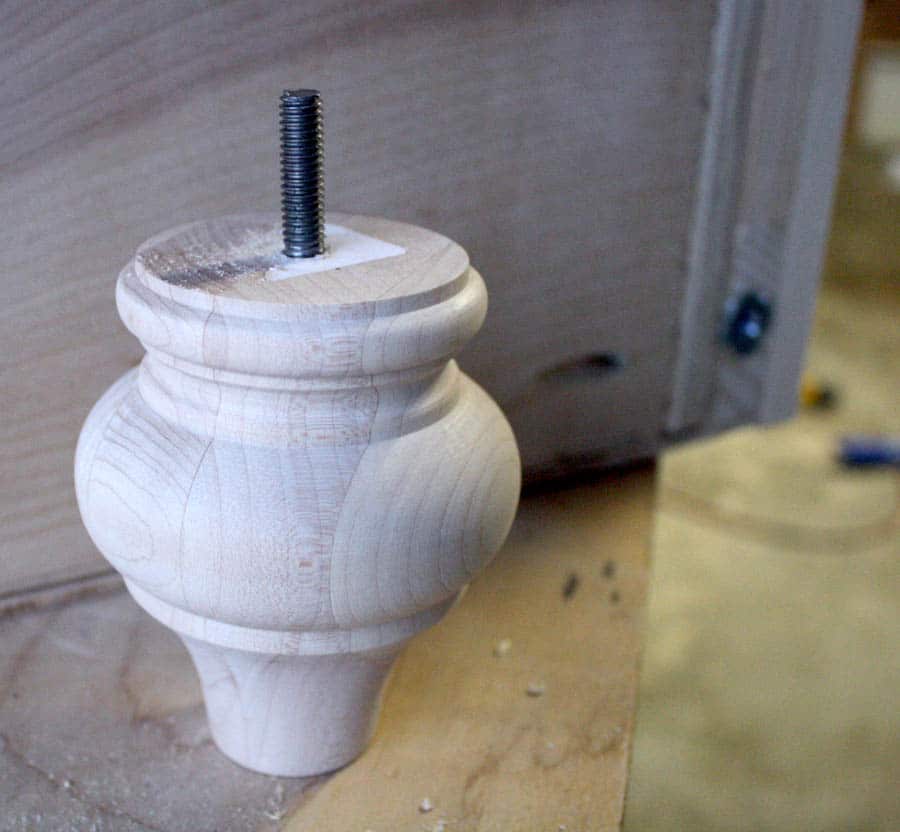
I also discovered I enjoy saying ‘tee nuts’ – there’s a joke in there somewhere but I’m just gonna leave that to your own imaginations. You’re welcome.

Oh, Foresight, you elusive creature, you.
I ironed on a band of veneer edging onto the edge of the plywood shelf so that it looks like a solid piece of wood. You didn’t know that your iron totally counts as a power tool, did you? Yep.
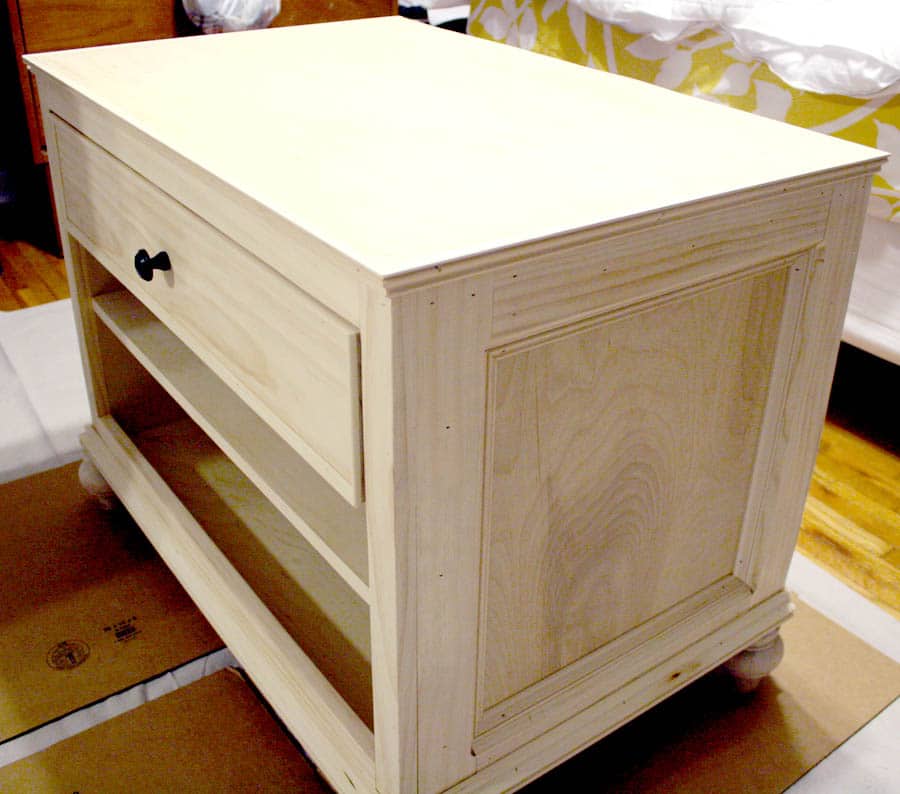
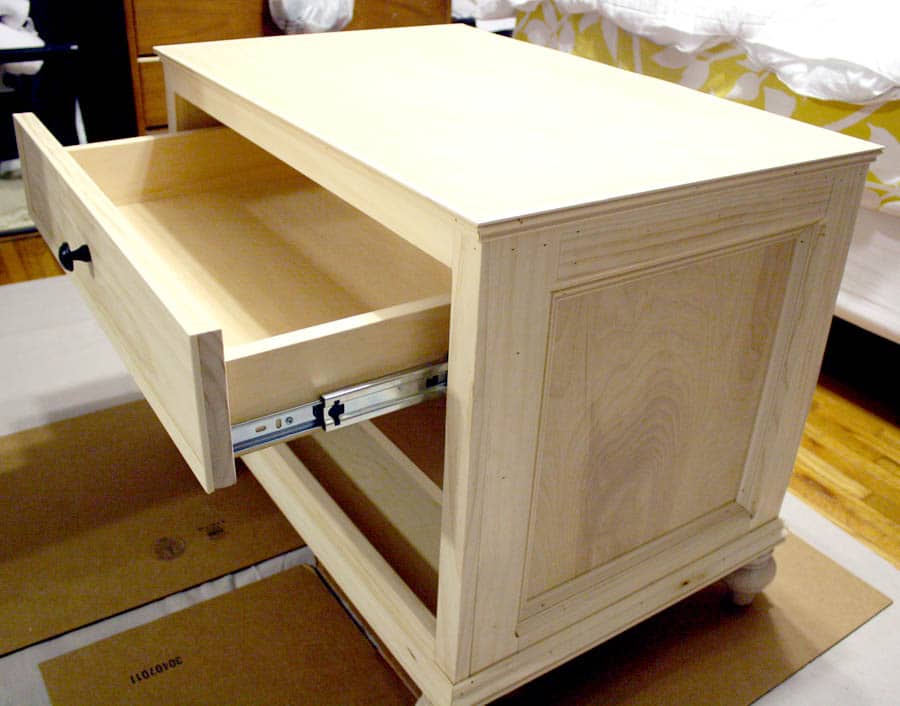
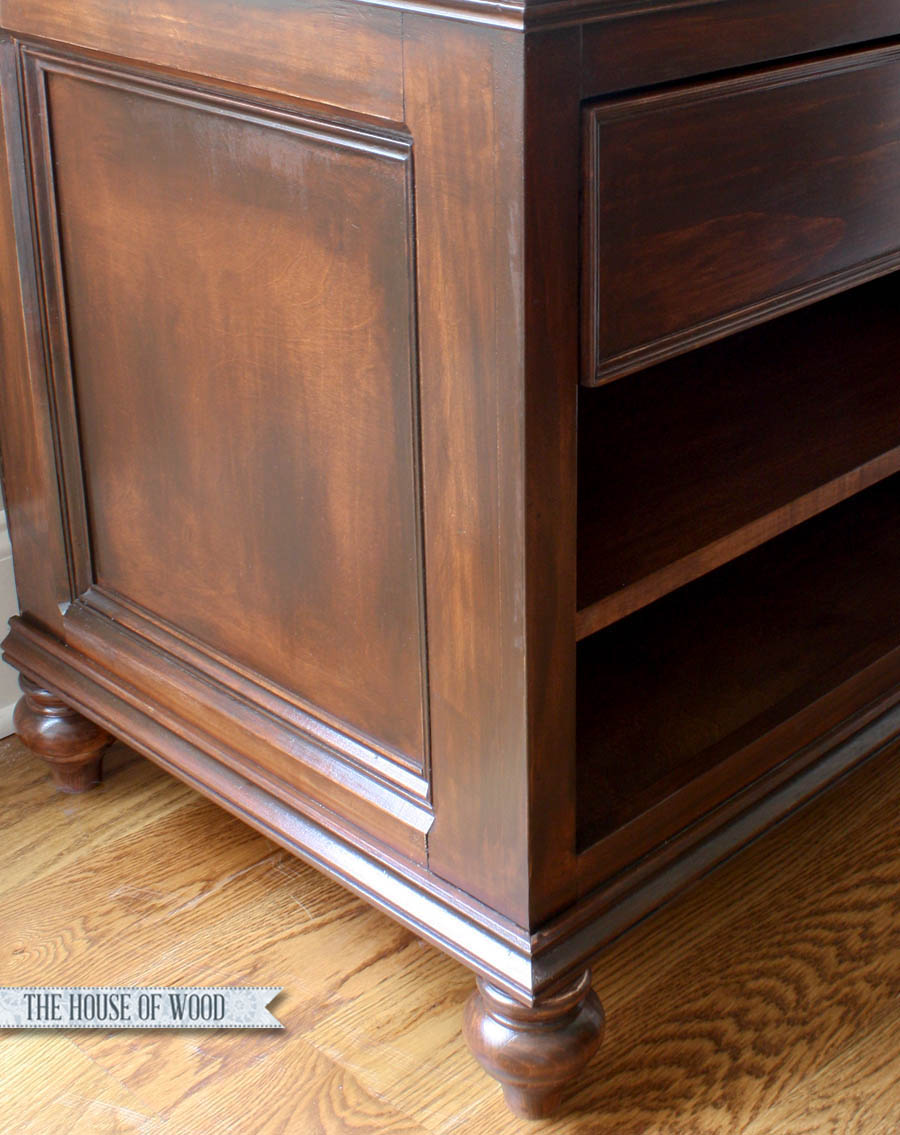
Update: The finishing tutorial for this printer table can be found here.
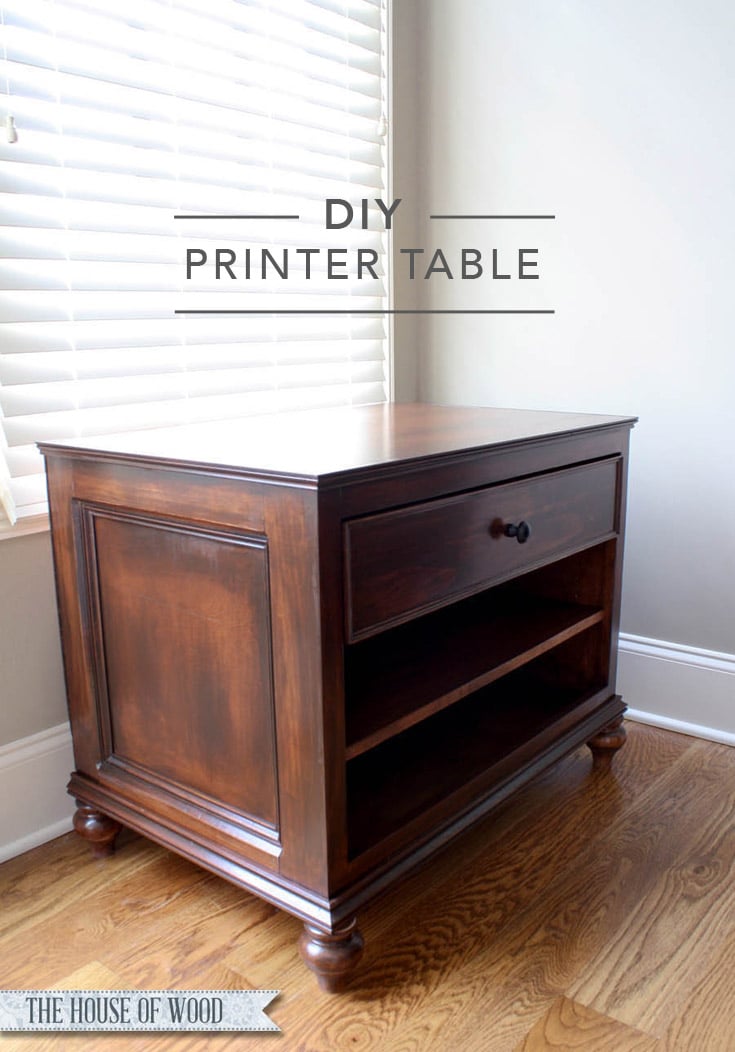
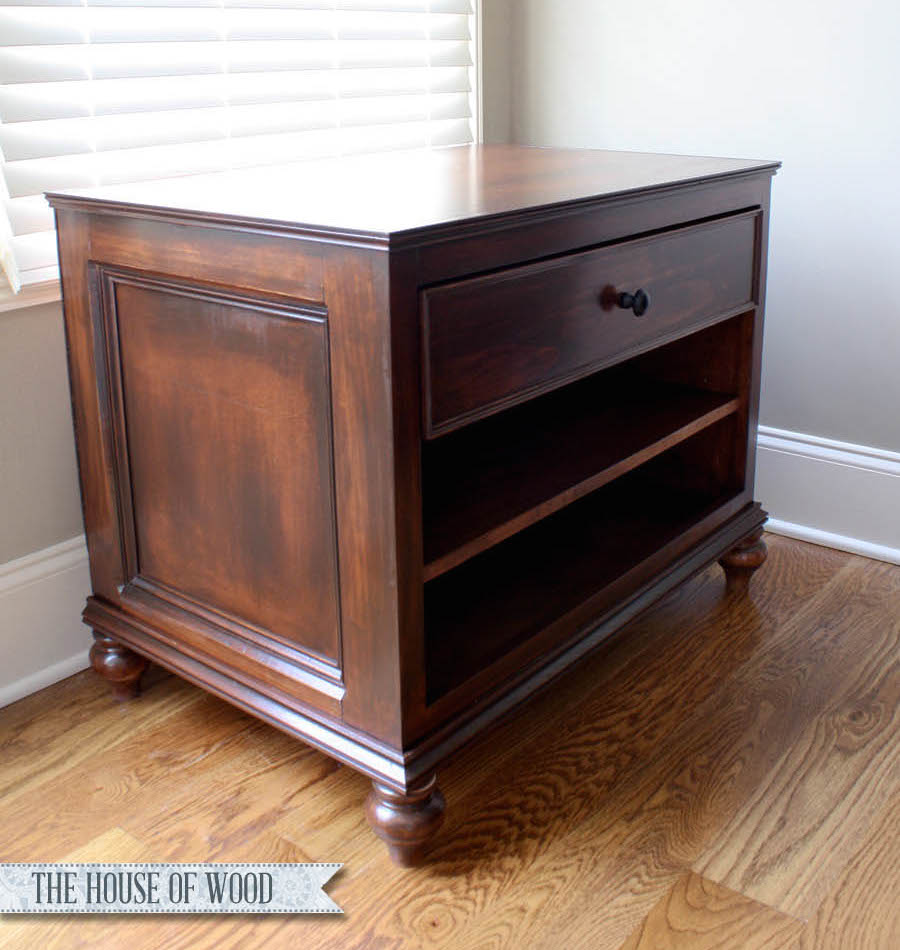

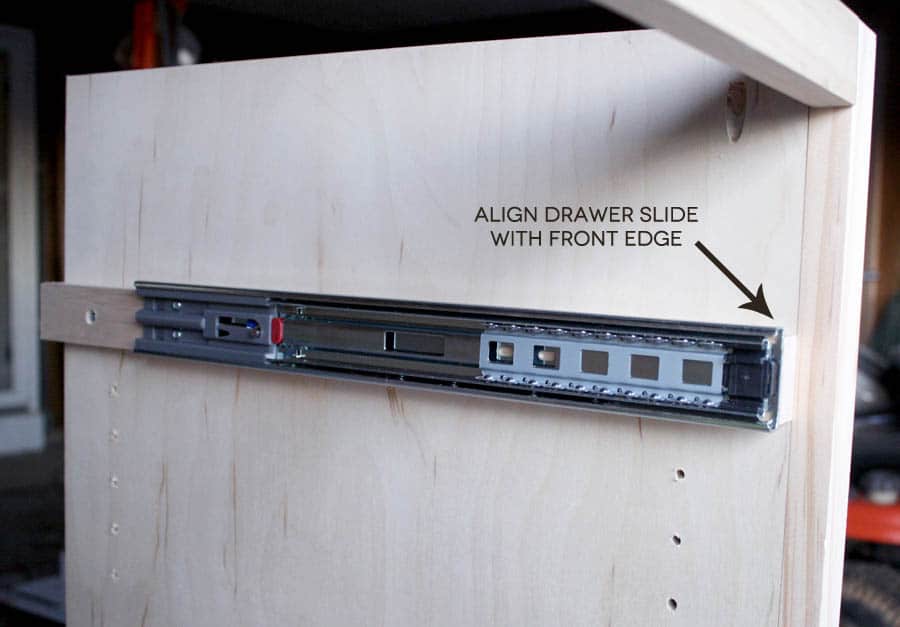
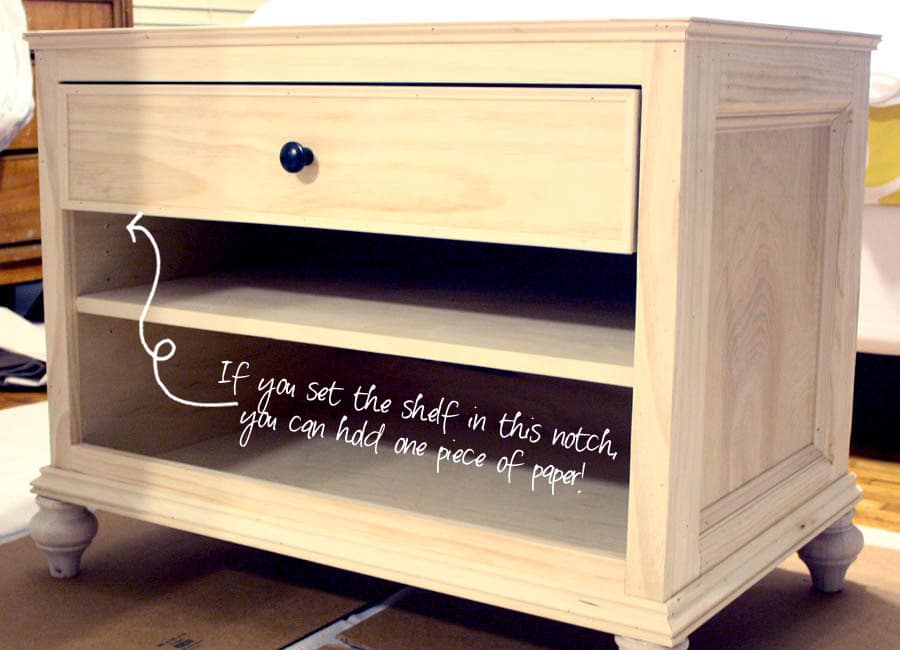
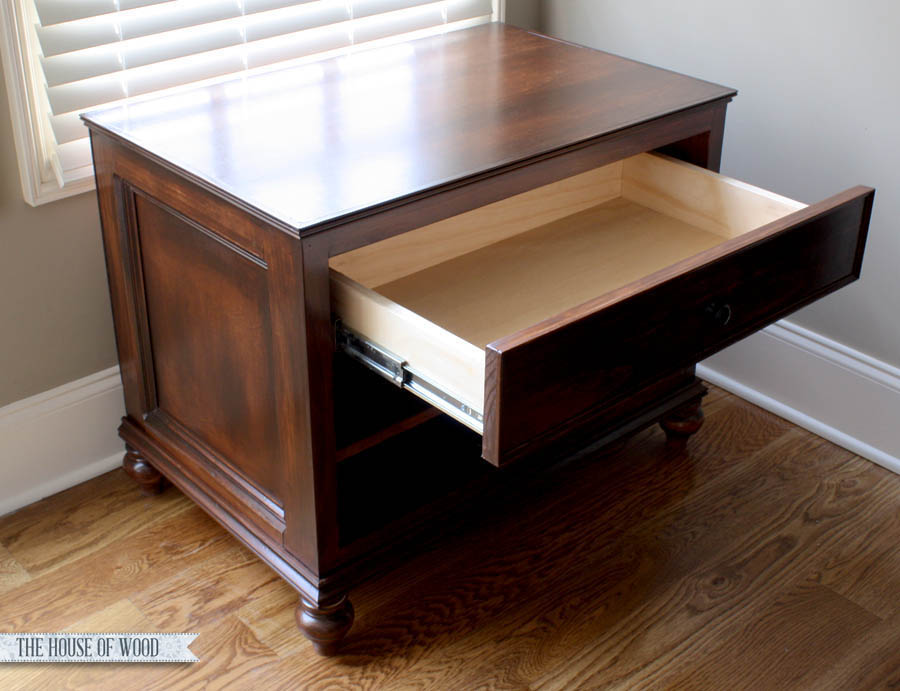


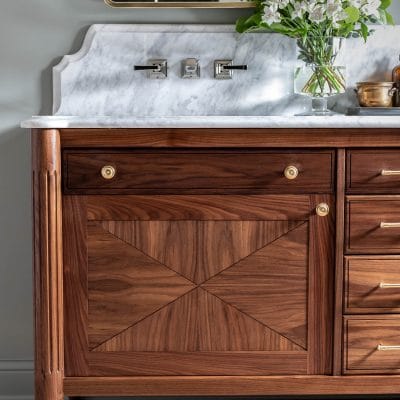
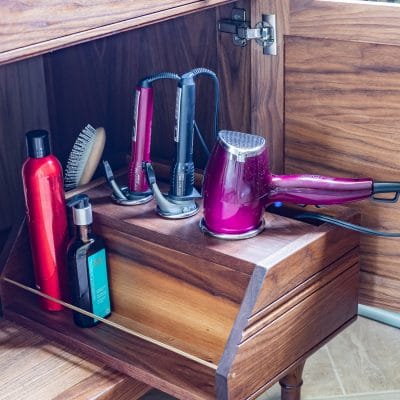

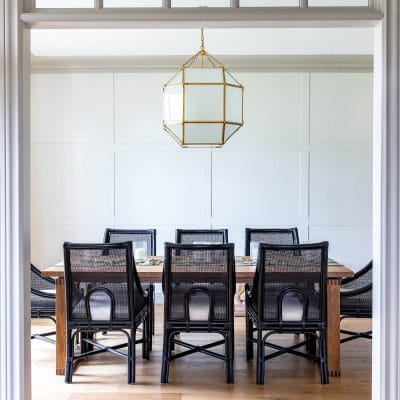
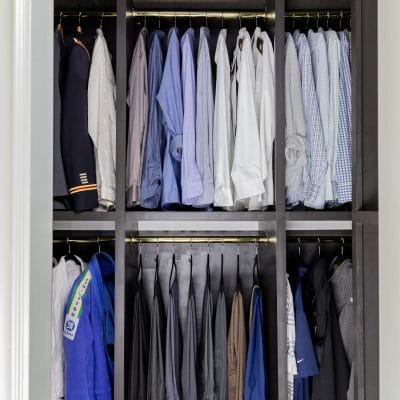
Hey Ana, really love this, wondering if I could pull this off! Have you posted that tutorial yet?
My name is Jen, but yes, the tutorial can be found in this post and the plans are linked from Ana’s site. Good luck and happy building!
Beautiful work! I wish I wasn’t scared of my router.
Thanks! It’s a grounded fear, that’s for sure! My router table makes it a lot less intimidating though.
Just wanted to leave a couple comments as a seasoned woodworker. You mentioned gluing a veneer strip to the front of the shelf to make it look like real wood. My thoughts are that it will eventually get damaged and fall off, or just plain fall off. Several ideas to consider:
1. Make the shelf out of real wood.
2. If you must use plywood, cut a 1/4″ strip of oak the length of the shelf width and glue that on.
3. This goes for both plywood and real wood, Glue a strip of off-species hardwood several inches wide to the front of the shelf. It will give it a two tone effect.
As a side note, You may want to somehow mention how the plans for this cabinet are easily modifiable to basically any size. The carcass for mine is 16″ W x 14″H x 14″D. Mine actually fits underneath my desk with my printer on top. So far, mine is also free as I have made it completely out of scrap oak or other project leftovers. Thank you so much for the ideas.
Thanks so much for the tips, Chris!
Hi Jen, I’m a newbie builder (one side table and one kitchen island – which turned out pretty good if I do say so myself), and I am confused about the T nuts and threaded hanger bolts process. So you drill a hole in the leg first? How do you make sure you are getting it exactly straight so the leg does not go on all wonky? And the hard part was just screwing the bolt into the wood? Or am I missing something. I can see how putting that bolt into wood would be kind of a tight squeeze, so is that why you needed your hubs? Thanks for helping me get this. I’m sure it’s probably SO simple and I am just a little on the “inexperienced” side. Thanks.
Hi Karen,
I go into more depth regarding the hanger bolt/tee nut combo here: https://jenwoodhouse.com/diy-printer-table/ (scroll down to step 4). Hope that helps – good luck!
What stain did you use?
Hi Dan,
The finishing tutorial is here: https://jenwoodhouse.com/printer-table-finish/
Great project and tutorials, very inspiring!
Which plywood did you use? I went to HD to look for PureBond, only found there are couple of finishes. There are Birch, Maple, Redwood and Sande. The first 3 are exactly the same price at $49, Sande is cheaper at $39… Any suggestions?
Thanks Jimmy! I use maple and birch usually because they take stain similarly. I typically build furniture with maple hardwood boards, so I try to match the wood species whenever possible. Hope that helps!
Perfect, many thanks Jen… Will give Maple a try today 🙂
id like the plans to do this project myself. this is an awesome project
For the moldings at the bottom of the printer table, and the top piece, did you route those yourself, or did you find them somewhere? If so where? If you made them yourself, could you provide more info on your steps or at least more closeups of the molding profile? I am building this project now and not sure about the decorative moldings. Thanks for your work!
Hi Steve,
I picked up all of the decorative molding from Home Depot – they have a variety of different profiles. You should be able to find them nearby the crown molding aisle. Hope that helps!
Simply beautiful what a wonderful job! Thanks for the ideas.
GOOD DAY … I WAS HOPING TO GET THIS PLAN EMAILED TO ME FOR A VIEW OR 2. THE ONLY THING I RECEIVED BACK WAS THIS PAGE IN PDF FORMAT. ANY IDEA HOW I CAN FIX THIS? I DONT FIND A NEWSLETTER LINK EITHER. TANX MUCH TOM